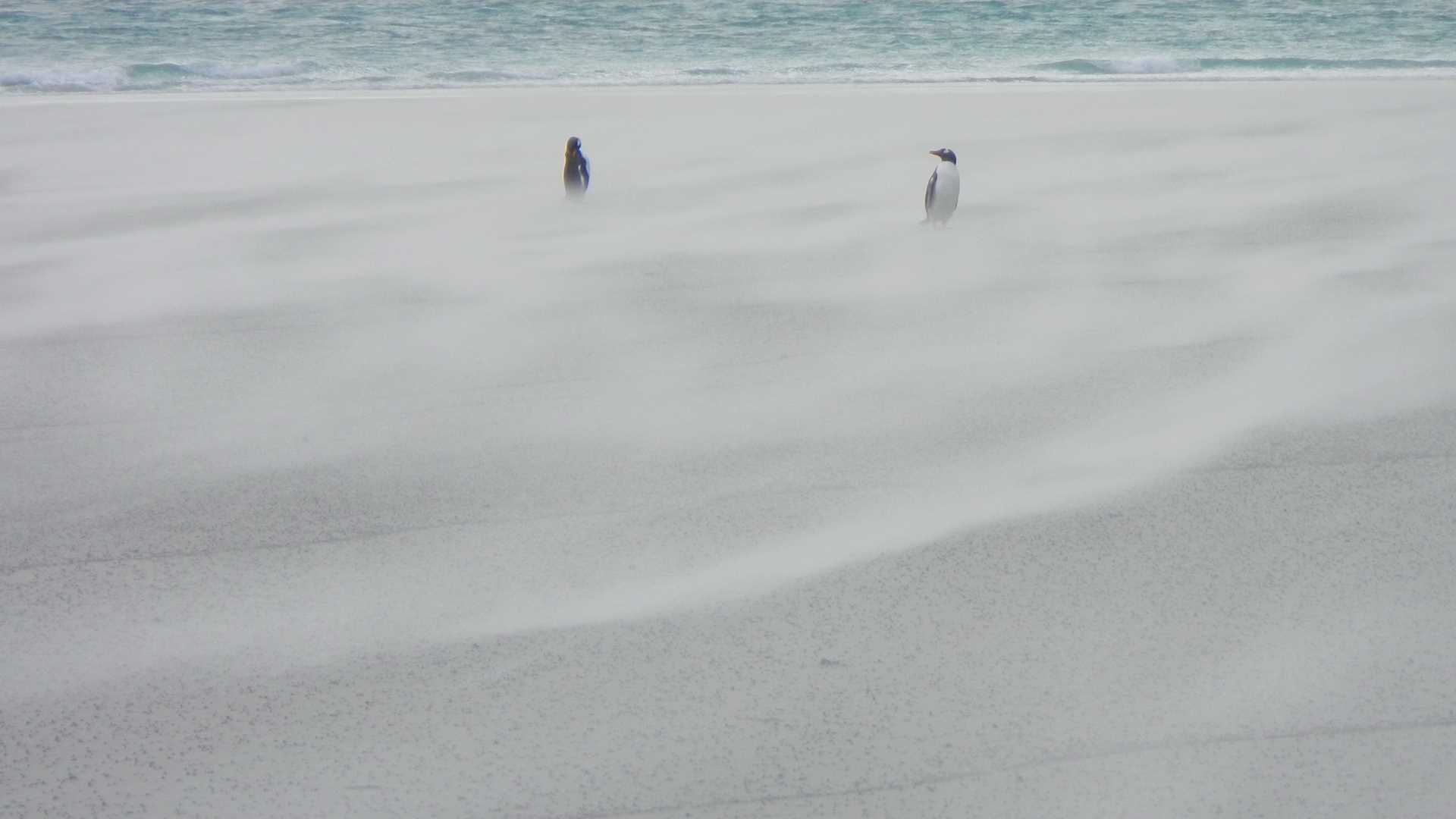We began our day with a windy morning on a beautiful sandy beach. Saunders Island is full of wildlife. The tussock grass blew in circles as black-browed albatross chicks rested in their sheltered ravine. Magellanic oystercatchers went about their business in an atypically quiet way, while Magellanic penguins tended to their young near the entrances of their burrows. Gentoo penguin chicks tirelessly chased their parents in hopes of another feeding. The sun was shining and the wild world went about its daily adventures while we watched, smiling.
- Daily Expedition Reports
- 25 Jan 2022
Saunders Island and West Point Island, Falklands, 1/25/2022, National Geographic Endurance
- Aboard the National Geographic Endurance
- Antarctica
Marylou Blakeslee, Naturalist
For the past 20 years, Marylou Blakeslee has traveled the world sharing her love of wild places. She lectures on a number of topics from the bears and wolves of the Arctic, to the leopard seals and whales of the Antarctic, as well as the turtles and ...
Read MoreShare Report
Related Reports
2/4/2023
Read
National Geographic Endurance
At Sea
After three wonderful days in New Zealand’s Subantarctic Islands, we are making our way south to Macquarie Island, within the Tasmin State of Australia. Macquarie is a UNESCO World Heritage site, namely for its fascinating geology. The intact seafloor was pushed above sea level by mid-oceanic convergence to form the island. The same ridge that produced Macquarie Island also creates ocean currents that generate biodiverse hotspots, and we were greeted with evidence of just that this morning. During breakfast, we spotted several whale blows in all directions around National Geographic Endurance . We sighted two southern right whales, one of the rarer cetaceans in the Southern Ocean, and numerous sei whales. We were also escorted by a large pod of long-finned pilot whales. The large males and pairs of mothers and calves were just off the bow. They had large, round, shiny heads, white blazes, and beautiful saddles. It was truly a treat to watch them effortlessly move through the water as a unit before disappearing together in one fluid dive. We had two lectures by the photo team. One helped us better understand the phone in our pockets, a.k.a. our smartphone, and the other helped us improve our bird photography. Next up was a lecture on the smell of the ocean by naturalist Conor Ryan. We learned how birds find dense prey aggregations in the vast ocean they call home. The seas were relatively calm, and the fog came and went throughout the day. Albatrosses soared along effortlessly as we moved toward our next destination. The air is getting noticeably cooler. Soon we will lose sight of the vegetation we have been enjoying along with the milder temperatures. We are getting ever closer to the Ross Sea. We are getting closer to Antarctica.
2/3/2023
Read
National Geographic Endurance
Perseverance Harbour and Campbell Island
Although we arrived in thick fog and rain, the weather and visibility gradually improved as the day progressed. We Zodiac-cruised the bays of the inner harbour in the morning, followed by a rewarding hike to a southern royal albatross colony under blue skies in the evening.







